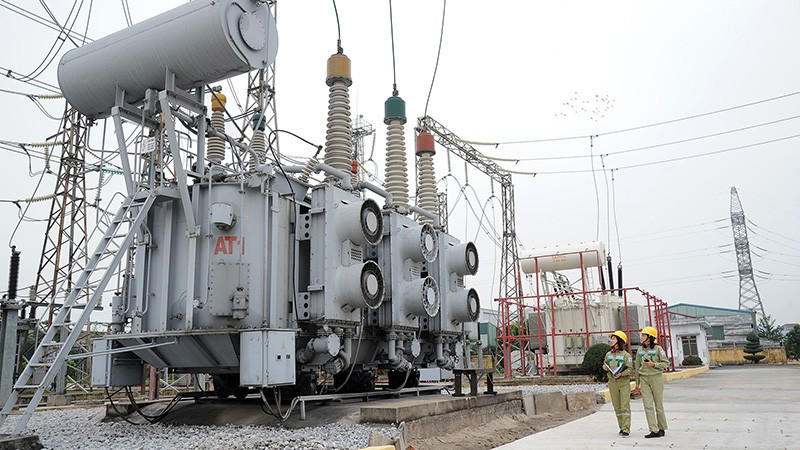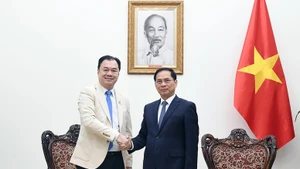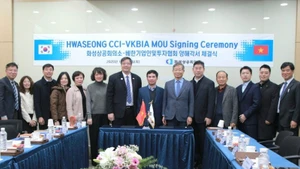Vietnam’s pledge to achieve net zero emissions by 2050 at the COP26 conference makes the completion of PDP VIII more challenging and time-consuming as the plan needs to be reviewed and revised to ensure that it is compatible with this new goal.
According to the Ministry of Industry and Trade (MOIT), PDP VIII has been developed in a rigorous and scientific manner with extensive consultation, including feedback from many international partners and financial institutions in the direction of gradually reducing reliance on fossil energy sources, increasing the use of renewable energy sources such as hydropower, wind power, solar power and biomass in order to lower greenhouse gas emissions.
PDP VIII is designed to provide sufficient power for domestic demand and support socio-economic development goals with an average GDP growth of around 7% from 2021 to 2030 and 6.5-7.5% from 2031 to 2050.
MOIT Deputy Minister Dang Hoang An stated that Vietnam is committed to green and sustainable development, giving priority to clean and green energy sources such as renewable energy, new energy (ammonia, hydrogen). He said that no new coal-fired power plants would be developed except those from the previous plan. He also said that fossil fuel projects would be gradually replaced by clean fuels to lower emissions.
Therefore, according to the latest draft of PDP VIII, coal-fired power will only account for 19% of the total generating capacity of 158,244 MW by 2030, with hydroelectricity at 18.5%, domestic gas thermal power at 9.4%, onshore wind power at 13.8%, and solar power at 13%. By 2050, hydropower will account for only 6.3-7.3% of the total generating capacity, while coal will be excluded in electricity generation.
Deputy Prime Minister Tran Hong Ha has instructed that PDP VIII should include new ideas and scientific and technological advances to deal with the challenges of climate change, emissions reduction, renewable energy transition, green transition, circular economy and carbon taxes on goods manufactured using fossil energy. He emphasised that "This is an inevitable trend and an opportunity for Vietnam to successfully transform its economy and gain an advantage in global trade.”
Commenting on PDP VIII, Deputy Chief of Mission at the US Embassy in Vietnam said that Vietnam has taken pioneering steps in the transition to clean energy by becoming one of the first countries in the world to commit to the Just Energy Transition Partnership (JETP).
She said the US side highly appreciates and supports the draft PDP VIII in an open direction that is flexible, easy to adjust and highly effective in implementation, aligned with energy transition in Vietnam. Combating climate change is a shared priority of the US and Vietnam. The US also looks forward to fulfilling its commitment to support Vietnam's climate goals.
According to the US diplomat, the US has provided technical support to develop the policy and legal framework for Vietnam's clean energy transition, and is ready to continue to support Vietnam's successful implementation of PDP VIII and the direct power purchase agreement when approved.
Chairman of the American Chamber of Commerce (AmCham) in Vietnam John Rockhold also highly appreciates the latest draft of PDP VIII, which regards the JETP mechanism as an important solution for energy transition in Vietnam. However, in order to ensure the financial feasibility of its implementation, AmCham proposed focusing on providing finance for power and energy projects.
Accordingly, in order to mobilise capital successfully, it is necessary to perfect mechanisms, policies, institutions and laws to attract investment from the global private sector.
PDP VIII should be flexible enough to keep pace with global innovations in renewable energy, storage technology, flexible internal combustion engine (ICE) power plants and other technologies that will be available in the market. At the same time, flexibility is needed to allow certain projects to use existing resources to increase the initially allocated capacity if they have advantages in development time and meet the commercial operation requirements by 2030 and if other projects are behind schedule.
According to Chiaria Odetta Rogate, Senior Energy Specialist at the World Bank, Vietnam's capital demand for power generation and grid development is very large. Therefore, it needs to improve the investment climate to be able to secure loans.
In this regard, ADB Country Deputy Director for Vietnam Keiju Mitsuhashi emphasised that the bank is ready to consider both government and non-government funding to help Vietnam strengthen the transmission grid system and ancillary services to ensure grid stability with more renewable energy.
Deputy Minister Dang Hoang An said that Vietnam is always aware that energy development must harmonise the interests of the State, investors and people, and ensure social security. He added that Vietnam has specific and clear strategies with detailed roadmaps and is making efforts to implement this process. Currently, the MOIT is working on an action plan following the approval of PDP VIII. A number of relevant laws will also be amended so that the implementation process will be synchronous.
PDP VIII is an open and flexible plan, so the numbers are approximate. During the implementation process, effective projects such as rooftop solar power and cogeneration thermal power along with new energy sources such as hydrogen and ammonia will have no limit on capacity.
The consultation opinions, especially from international friends, are essential for the MOIT to finalize the content of PDP VIII to ensure that it is objective, scientific, and feasible. This will allow Vietnam to develop its power sector in a sustainable manner that achieves both energy security and climate change mitigation.
Vietnam seeks continued support from foreign partners in technology transfer, training and administration, as well as financial assistance, including affordable financing packages for businesses and people.
















